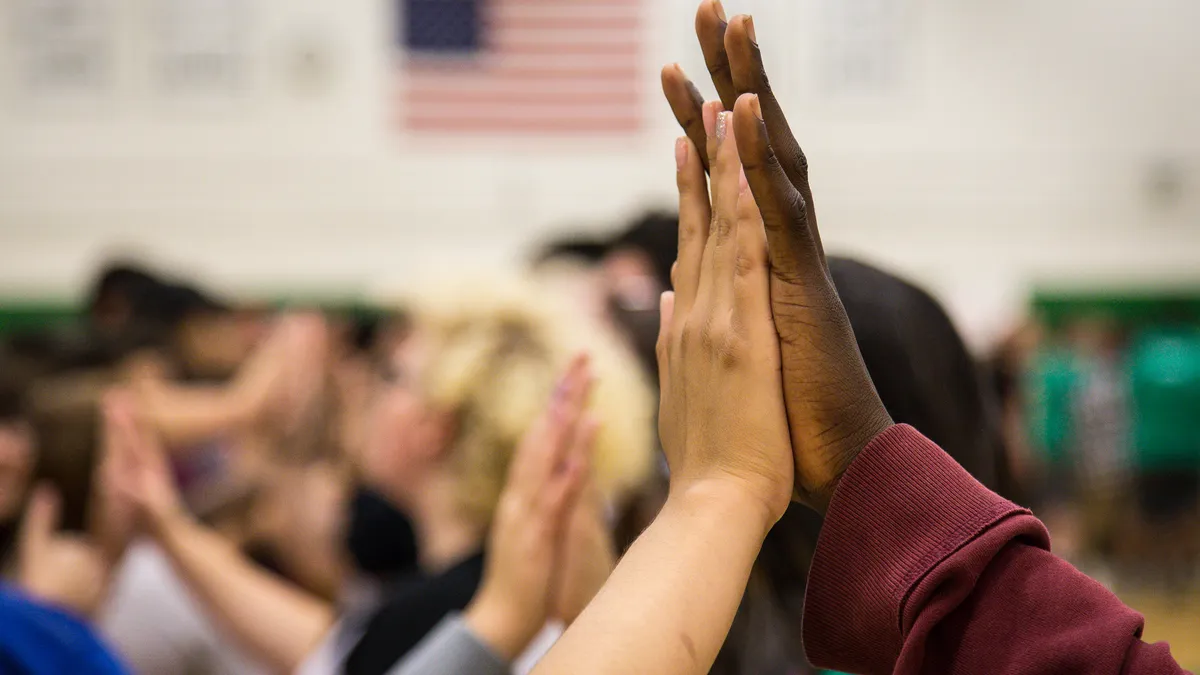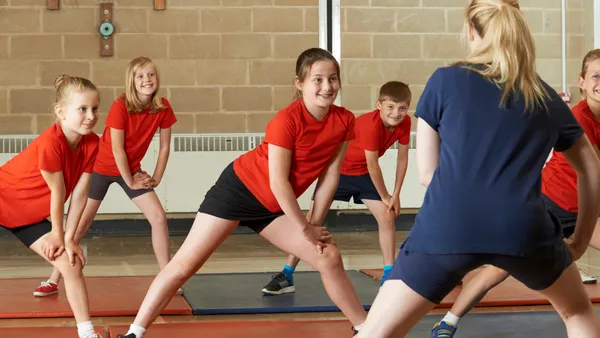Chrysantha Norwood is a 6th grade teacher and instructional coach at Distinctive College Prep: Harper Woods in Harper Woods, Michigan. Shane Blandford is principal at Indian Head Elementary in Charles County Public Schools in Indian Head, Maryland. Scott Hangey is vice principal at Malcolm Elementary in Charles County Public Schools in Waldorf, Maryland. Mike Hoffman is vice principal at JP Ryon Elementary in Charles County Public Schools in Waldorf, Maryland.
The start of every new school year is a critical time to welcome students, build strong relationships, and create a culture of learning, especially as we begin the 2021-22 school year with continued uncertainty and heightened emotions.
Schools across the country, like ours, representing larger public districts in Maryland to school networks in Illinois and Michigan, are prioritizing SEL in the 2021-22 school year — not just to support our students, but their families and our staff, too.
Again we find ourselves returning to school with a significant amount of uncertainty around what to expect, especially as many of us are returning to in-person learning. The collective traumatic stress we are navigating will need to be mitigated in a proactive manner versus a reactive response if and when our students show signs of stress or anxiety.
It’s not just students who are on educators’ minds, but their families as well. All families have experienced some type of stress during this pandemic, and those stresses have trickled down to the students. This year, as we welcome our students back into in-person instruction, we have to take special care that our students and their families need us more than ever to continue to care for them, strengthen their social interactions, and give them the best education we can.
While many parents and families are expecting a larger emphasis on academics as students return to classrooms, we know social-emotional learning is the foundation for all learning. It is vital now more than ever that we make this a priority in our schools, because we know the importance of social and emotional development on the brain. SEL needs to be at the heart of everything we do so teaching and learning in other subject areas can happen. If students’ social-emotional learning is not addressed and cultivated, academic learning cannot and will not happen.
Environmental factors like a sense of belonging also contribute to academic growth. We have seen firsthand that when you provide a safe, trusted environment for students to learn how to express their emotions appropriately, learning flourishes. Students gain academically by knowing their teachers and administrators understand and accept them. They need to know that whether they meet, exceed or fall short of expectations that their teachers and the other adults in their lives are there to offer praise and support.
In addition to the disruptions, trauma and challenges of the past year-and-a-half during the pandemic, we’re making SEL a priority because we’ve seen the benefits firsthand — even before the pandemic.
In Chrysantha Norwood’s school, implementing SEL increased attendance. It also gave teachers an actionable opportunity to infuse joy into their classes daily. At Principal Shane Blandford’s school, they started to see a decrease in office referrals after implementing SEL with Move This World. They were also able to actually see students using strategies to manage their emotions in an effective way.
At Vice Principal Scott Hangey’s school, teachers noticed students were more open to listening to their classmates. Parents also commented on how their students have utilized SEL strategies outside of the school building. We’ve all seen the impact SEL can have on communities.
It’s not just students and their families who benefit from social-emotional learning. We want other educators to know that developing and maintaining an SEL practice will benefit them, as well. If we, the educators, are feeling well and balanced, if we are able to mitigate our own stress and any potential compassion fatigue, we will be able to show up in a greater capacity for the students we serve.
We don’t know what awaits us this school year, but through the waves of uncertainty, we can rely on social-emotional learning as our life preserver to keep our students — and ourselves — above water. Being aware of SEL and incorporating it in your classroom will help you do the No. 1 thing in school: create strong relationships with your students. You cannot teach effectively until your students feel safe and comfortable with you.







 Dive Awards
Dive Awards





